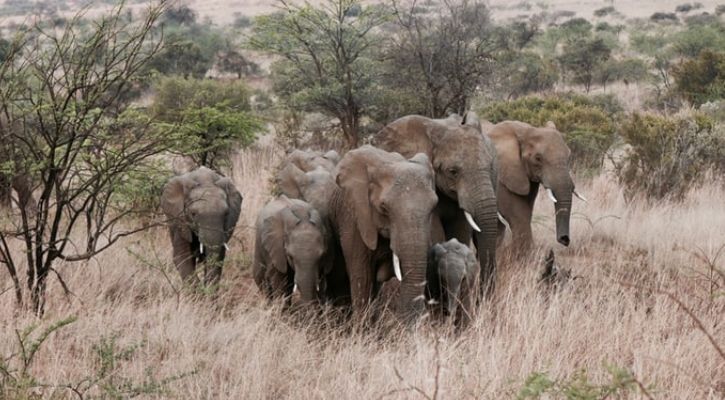Elephant Skin

An African forest elephant covering its skin with mud
An elephant’s skin is generally very tough, at 2.5 cm (1 in) thick on the back and parts of the head. The skin around the mouth, anus, and inside of the ear is considerably thinner. Elephants typically have grey skin, but African elephants look brown or reddish after wallowing in coloured mud.
Asian elephants have some patches of depigmentation, particularly on the forehead and ears and the areas around them. Calves have brownish or reddish hair, especially on the head and back. As elephants mature, their hair darkens and becomes sparser, but dense concentrations of hair and bristles remain on the end of the tail as well as the chin, genitals and the areas around the eyes and ear openings.
Normally the skin of an Asian elephant is covered with more hair than its African counterpart.[60] Their hair is thought to be for thermoregulation, helping them lose heat in their hot environments.[61]
An elephant uses mud as a sunscreen, protecting its skin from ultraviolet light. Although tough, an elephant’s skin is very sensitive. Without regular mud baths to protect it from burning, insect bites and moisture loss, an elephant’s skin suffers serious damage. After bathing, the elephant will usually use its trunk to blow dust onto its body and this dries into a protective crust.
Elephants have difficulty releasing heat through the skin because of their low surface-area-to-volume ratio, which is many times smaller than that of a human. They have even been observed lifting up their legs, presumably in an effort to expose their soles to the air.[60]
